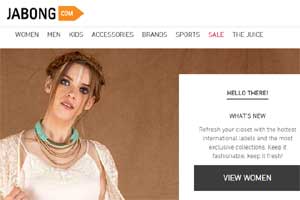Online fashion retailer Jabong has made headlines over the last couple of days about its probable takeover, with Snapdeal at the helm as its potential buyer. At the time of going to print, Jabong’s current MD & CEO Sanjeev Mohanty was also reported to be soon on his way out, mostly likely to head to Levi’s India next. Mohanty was brought on board in December 2015 for the struggling e-tailer turnaround. In conversation with BrandWagon’s Ankita Rai, he talks about the need for sanity in pricing and discounting and why he is unapologetic about his
single-minded focus on profit. Excerpts:
Snapdeal is understood to be on its way to acquire Jabong with the term sheet almost ready. What kind of partnership is Jabong eyeing?
Jabong, being an integral part of the Global Fashion Group, is focussed on building a premium e-commerce fashion business in India. We are always open to incoming interests from strategic partners to invest in the long-term growth and profitability of the business. This allows us to have strong synergy on the ground and deeper access to the market and consumers.
You were last with Benetton India as its head and have over 20 years of experience in the apparel business. There are speculations about your likely exit from the company once the acquisition of Jabong is complete. Has your experience on the brand side helped in getting the pricing and discount right at Jabong?
I am still with Jabong. I don’t want to comment on any speculation. Coming from a brick-and-mortar background, I do not feel apologetic about focussing on profits. It has been an alien concept in e-commerce. Sometimes when people ask me for GMV, I look blank and stupid as my natural instinct is to think net revenues. I have to back calculate GMV, if they insist. Gross sales is an important metric in the initial phases but beyond it, the focus should be on unit economics and what are the levers that can get you to a cash-positive business.
The biggest challenge is discounting. There has to be some sanity in pricing and discounting. It is already happening. 2016 has been a year when everyone has paused a bit. Discounting is a function of not only the market’s competitive dynamics but is also driven by merchandising curation.
Jabong reported 14% increase in net revenue to R243.78 crore in Q1 2016 as compared to the same period last year. For the first time, it reported a gross profit of R1.49 crore for this quarter. In retrospect, what are the key strategic initiatives that led to the company’s turnaround in the last eight months?
When I joined Jabong, there was nobody left in the leadership team except two or three key people. My first task was to get the right leaders on board. Then I focussed on stabilising the business. It was critical to make it clear that we are here to make money and not for valuation. Third, we defined which segment we wanted to play in. Initially, I closed down around 10 private labels and focussed on our core business.
The last eight months have been spent aligning the following key pillars: moving away from discounting, focussing on brands and on key growth segments such as ethnicwear, sportswear and beauty, building a completely new UI/UX, and getting the curation right. We are also launching a new app around August-end.
The turnaround will take at least 18 months. What we reported as gross profit positive is the positive unit economics. But after that, marketing and organisation costs are also involved. Over the next 12-19 months, Jabong should be able to turn cash positive as a business.
What are your views on private labels?
Private label is a double-edged sword as the segment typically faces high returns. It takes 20 years for brands to be built. Sometimes e-commerce players ignore these factors as they focus only on gross margins. Initially gross margin on paper might look good. But if you do a bit of calculation, you will see private labels require a lot of effort in terms of building the brand, marketing, supply chain etc. At Jabong, the strategy has been to use private label to fill the white spaces in the market. We would like to focus only on three-four private label brands. We envisage it will contribute 20-25% in the next three to four years. Currently 90% of the revenues come from brands, with imported brands contributing 10%. Private labels contribute 10%.
Jabong piloted the managed marketplace with select vendors in 2013, initially in the home furnishing category. As the company looks for profitability, is the focus more towards the marketplace model?
The move to marketplace is about selection and choice and not about profitability. We are launching a new back-end in the first week of August which which will enable sellers to interact better with the site, control pricing and ship faster. We are going to expand the marketplace across categories.
Jabong faces stiff competition from Myntra, Voonik and Koovs. Myntra recently said it was looking at a 90% increase in revenue. Does the competition worry you?
It is very easy to grow in this business but difficult to attain profitability. There are only two big vertical fashion players: Myntra and Jabong. Once we get the fundamentals of the business right, we will pull the lever on growth.
Competition doesn’t worry me. We are looking at a moderate growth of 25-30% for the next 12 months. The Indian fashion e-commerce market is likely to touch $20 billion by 2020. Currently, more than 60% of it is in the value segment. The premium, upper-mid price segment is $4 billion. Till now, 7.5 million people have shopped on Jabong alone. There is enough headroom for two-three players.


